Will the EU Commission announce its decision on tariffs on Chinese EVs today? Excitement has been building for weeks now. The impending decision is also fuelling the debate in Germany about its justification and possible side effects.
The scientific community has now come out in support of the proponents of tariffs. “Germany and the EU are not putting themselves in the wrong with trade defense instruments,” wrote the German Economic Institute in a study on the competitive situation with China. It argues that the People’s Republic has begun interfering in the economy through its subsidies. We show how market-oriented economists are becoming advocates of trade measures.
Today, we also introduce Tiangong, the star of this year’s Zhongguancun Forum, where China presents tech innovations. Tiangong was developed by the Beijing Humanoid Robot Innovation Centre and is part of the domestic Chinese race to develop human-like robots, Joern Petring explains in his analysis.
The government in Beijing sees these robots as the next big innovation in which Chinese companies are supposed to become global market leaders. So far, the United States and Japan still have a head start in some areas. But where does that leave Germany?

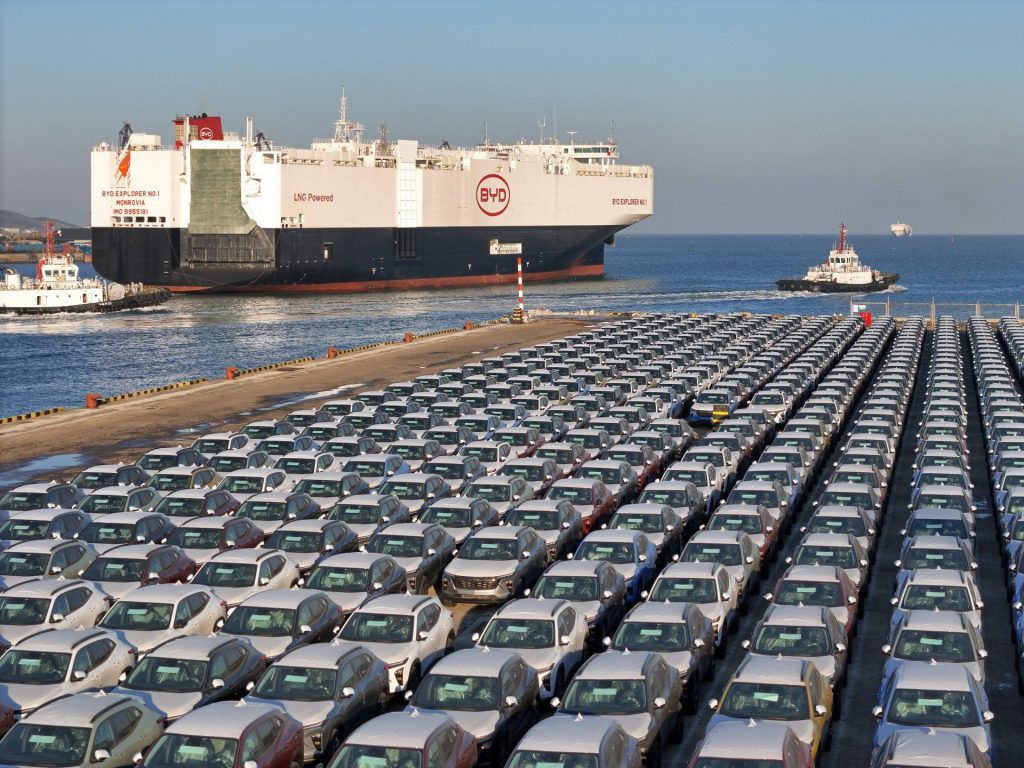
The upcoming EU decision regarding tariffs on electric cars manufactured in China has once again fuelled the debate about their justification and possible side effects. It is about the tension between open markets, the protection of domestic industry and a swift mobility transition. Business and politicians largely agree that competitive pressure from China has recently increased significantly. However, opinions differ on whether tariffs do not already constitute unacceptable protectionism.
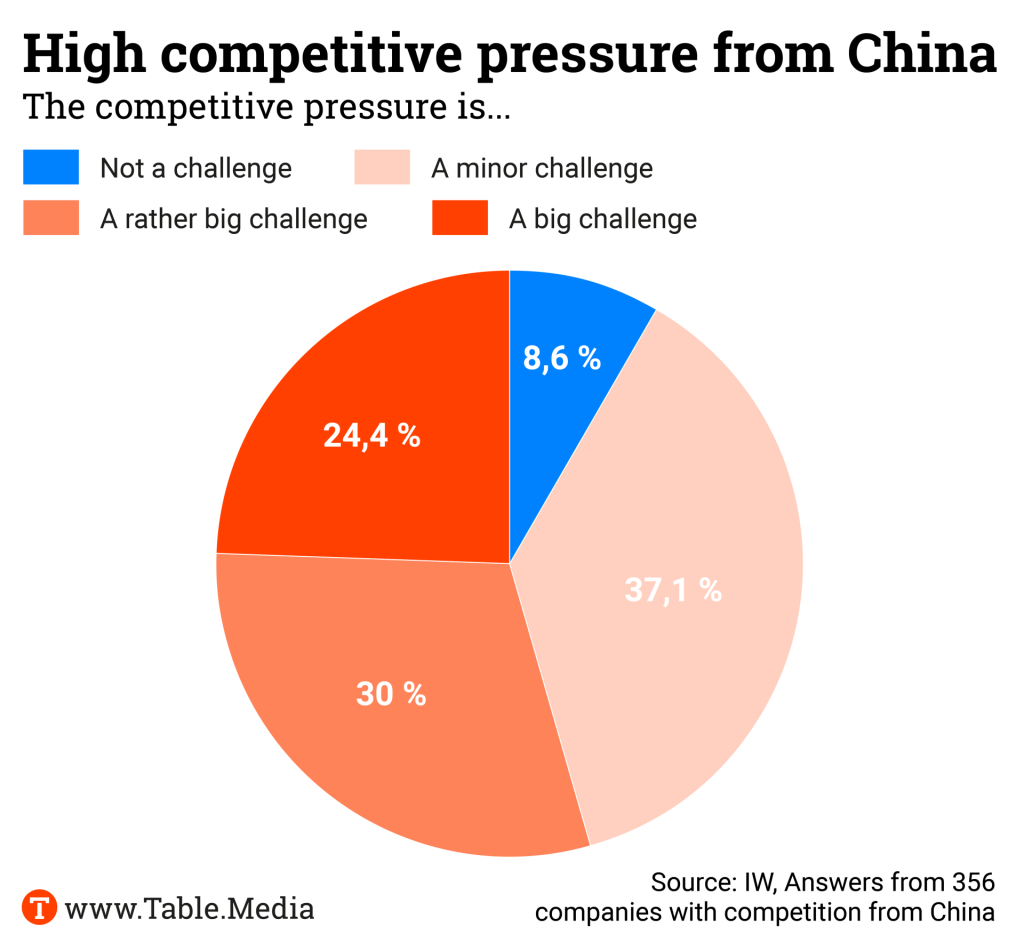
While EU Trade Commissioner Valdis Dombrovskis defends higher tariffs in an interview with Table.Briefings as a necessary safeguard against unfair competition, key German players have recently once again spoken out against trade interventions. The Foundation for Family Businesses and Politics justified its rejection last Friday with the risk of a trade conflict, which would affect all companies in international business. German Transport Minister Volker Wissing of the Free Democratic Party (FDP) rejects the interventions with similar arguments, as does the German car manufacturers’ association VDA.
The scientific community has now come out in support of tariffs. “Germany and the EU are not doing anything wrong by using trade defense instruments,” economist Juergen Matthes from the Cologne Institute for Economic Research (IW) writes in a new study on the competitive situation with China. He argues that China has started to interfere in the free economy through its subsidies. By imposing tariffs, Europe would only try to “compensate for China’s distortion of competition by leveling the playing field.”
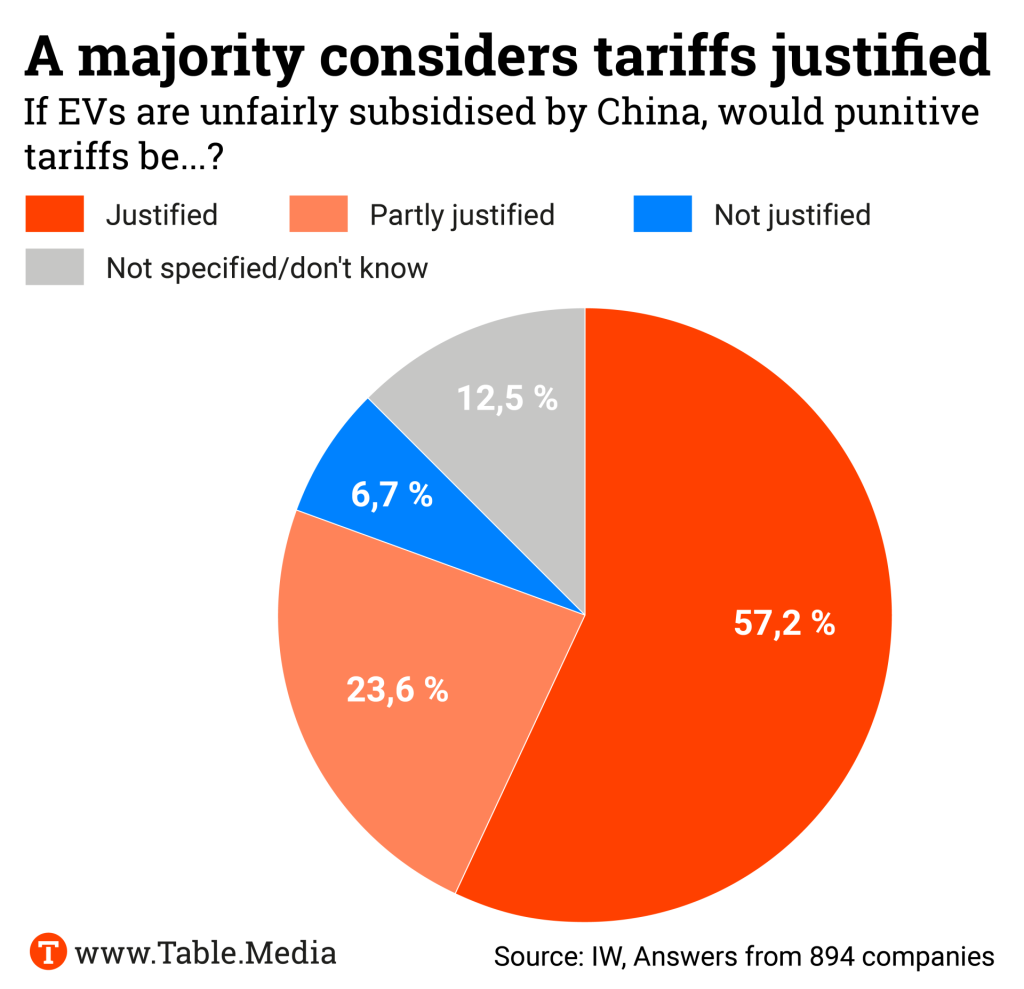
Matthes sees good arguments for the compensatory effect of the tariffs in the results of a new survey of 900 German companies as part of the IW Future Panel. Half the respondents stated that Chinese competitors undercut their prices by at least 20 percent. Even companies that carry out intensive research themselves are facing ruinous price pressure. The consequences are the threat of layoffs and relocations.
Overall, the survey reveals a growing unease about the increasing risk from China. “In summary, the survey results show that competition from China, which is often perceived as subsidized, is another serious stress factor for the German business model,” Matthes said. Many companies also fear that a future conflict over Taiwan could escalate into a major conflict that would significantly disrupt economic relations.
The current high competitive pressure is the result of several overlapping developments: Huge overcapacities have emerged in China – spontaneously but also due to government support for the manufacturing industry. This also affects high-quality goods. As China’s consumption and investments slow down, companies are unable to sell their products on the domestic market. The oversupply depresses prices. Almost everything is significantly cheaper in China than in Europe at the moment: energy, raw materials, primary products, and personnel.
As a result, other markets have increasingly sealed themselves off from the flood of goods, especially the US. Turkey, for example, has recently increased its tariffs on Chinese cars. “The EU market is therefore currently the largest market open to Chinese manufacturers,” Dombrovskis said. “And we can see that the market share of Chinese manufacturers is growing very quickly.” The EU Commission must react to the threats to European industry.
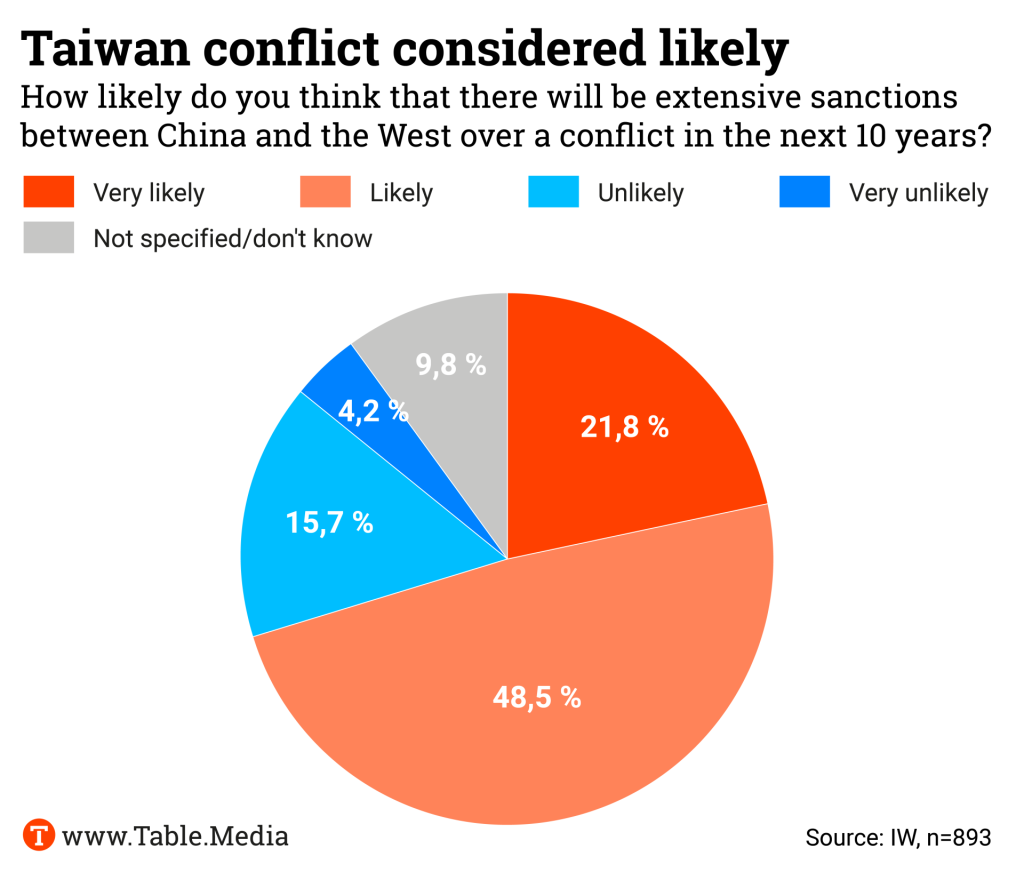
The import pressure from China is rising sharply, particularly in environmental technology such as solar cells and batteries: After the US government increased tariffs, Chinese exports have shifted to Europe. This increases competition for companies such as ACC, Northvolt and VW, which want to manufacture their own batteries in Europe. The overcapacity is so massive that Chinese companies are already calling for government intervention at home to counter the destructive price war.
Unlike the Foundation for Family Businesses or the VDA, economist Matthes considers the risk of Chinese countermeasures calculable. Only three percent of German jobs directly or indirectly depend on exports to China; most German suppliers produce locally for the Chinese market anyway. Matthes believes the current priority is to protect the European industrial base from being undermined by China’s subsidized exports.
In addition, the EU must show that it is willing to act and occasionally take a warning shot at China for its threatening behavior, said Matthes. He argues that it is important that the EU’s policy remains within the framework of what the World Trade Organization (WTO) stipulates. Otherwise, the EU would truly be in the wrong.
However, the IW also emphasizes that the EU must not leave it at tariffs and other protective instruments, otherwise it will only emerge poorer. It needs a “fundamental and broad-based reform initiative” for improved competitiveness. Overall, the investment and location conditions must be massively improved again.
Above all, it comes down to innovation and digitalization. Germany’s problem lies almost exclusively in the fact that China’s technical capabilities have risen to a world-class level, and it now offers state-of-the-art quality products at low prices.
Forty years ago, goods such as plastic flowers and T-shirts came from China, 30 years ago, sneakers and electronic toys, 20 years ago, electronics such as PCs and cell phones – and now what Germany is known for: machinery, cutting-edge electronics, vehicles, optical devices, medical technology, specialized chemicals and the like.
Industries such as precision mechanics are only now really pushing onto the international markets from the People’s Republic. China is also playing much harder today, as it hardly needs German technical assistance anymore. These are all successes of Chinese industrial policy and, in particular, the “Made in China 2025” initiative.
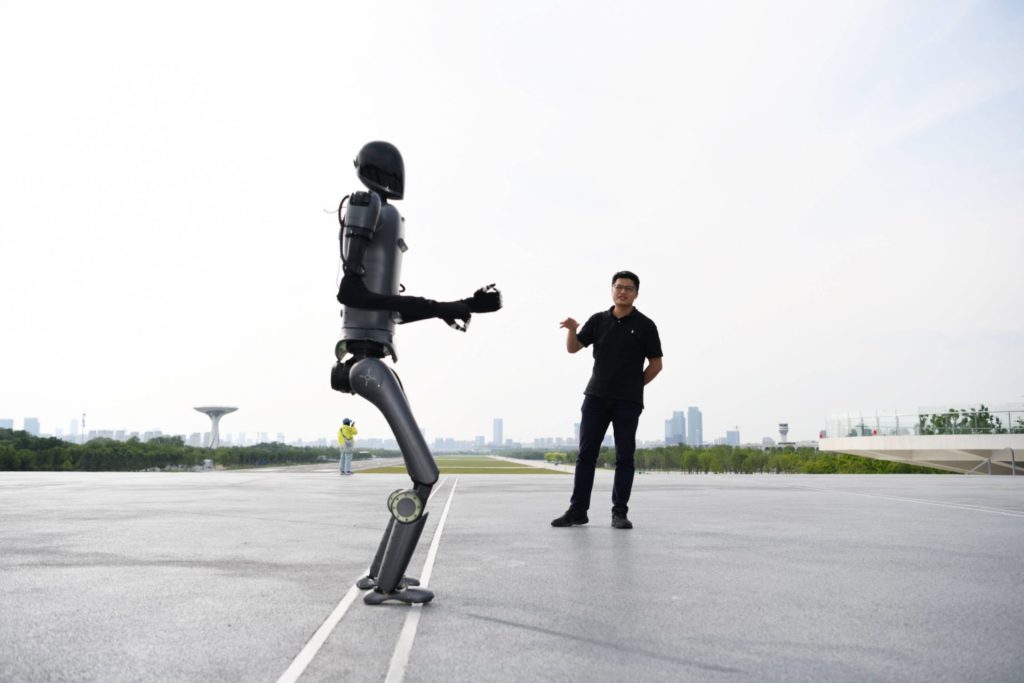
The annual Zhongguancun Forum is known as the place where Chinese companies present new technological breakthroughs and innovations to the world. This year, the forum, named after Beijing’s eponymous tech district, had a very special star in the form of “Tiangong.” In late April, guests watched in awe as the humanoid robot walked across the stage with relatively stable steps.
The company Beijing Humanoid Robot Innovation Center has developed Tiangong. It claims that the robot moves at six kilometers per hour. With a height of 1.63 meters and a weight of just 43 kilograms, it has a “slim and efficient design.” Its visual perception sensors allow it to “precisely recognize and navigate its surroundings.”
The next spectacular video from China followed a few days ago. In it, the company Unitree Robotics showed off its G1. The robot, which will be priced at 16,000 dollars in the future, demonstrated remarkable abilities that seem both fascinating and slightly scary. The G1 was shown staying on its feet after being hit and knocked and constantly realigning itself, making it appear robust and resilient. Finally, it folds its legs and hands so compactly that it can simply be carried away.
These presentations clearly show that the race to introduce humanoid robots is clearly picking up speed. Chinese companies want to play a leading role in this market. But the competition in the West is formidable. Just two weeks before the Chinese unveiled Tiangong, US robot manufacturer Boston Dynamics, which is now part of the Japanese Hyundai Group, made headlines with the presentation of an all-electric version of its famous Atlas robot.
Its predecessor, a hydraulic version, was a YouTube star. For years, Boston Dynamics published videos showing it overcoming difficult obstacle courses or dancing. Other Western companies also have ambitious plans. Tesla plans to deploy its Optimus robot in its own factories by the end of 2024 and make it available for sale to external customers by the end of 2025.
Just last November, China’s Ministry of Industry and Information Technology issued new guidelines for developing humanoid robots. The government sees these robots as the next big innovations in which Chinese companies should become global market leaders. The paper lists targets and timetables for this new sector.
Accordingly, a domestic ecosystem for humanoid robots is to be established, and mass production will be prepared as early as next year. A particular focus is on developing dexterous robot hands, arms, and feet and research into artificial intelligence (AI) for humanoid robots. The aim is to achieve breakthroughs in motion control and human-machine interaction.
By 2027, the ministry aims to develop humanoid robots that are able to think, learn, and innovate. In parallel, a reliable industrial supply chain system is to be established to support production. The ministry expects humanoid robots to be among the next “breakthrough products,” similar to computers, smartphones and electric vehicles.
The plan is to establish two to three leading global robot manufacturers, as well as a cluster of small and medium-sized companies for specialized robot applications. Lightweight frames, strong body structures and high-precision sensors are important. The guidelines also cover possible application areas for the robots, including automotive production, healthcare, services, agriculture, logistics and special industrial environments where humans perform dangerous tasks.
According to a report by Grand View Research, the global market for humanoid robots was worth 1.11 billion dollars in 2022. It is expected to achieve an average annual growth rate of 21.1 percent between 2023 and 2030.
However, Chinese experts know that Chinese companies have a difficult task ahead of them. The Chinese party newspaper Global Times recently commented that improvements are still needed, particularly in chips and software, in order to catch up with the USA.
At the same time, it referred to humanoid robots as part of the “high-quality productive forces.” The term coined by state and party leader Xi Jinping has recently become a buzzword. The idea is to promote China’s economic development through technological innovation. The government wants to modernize the country’s industrial base. This should not only be achieved through the production of green energy and electric cars, but also through the sale of humanoid robots.
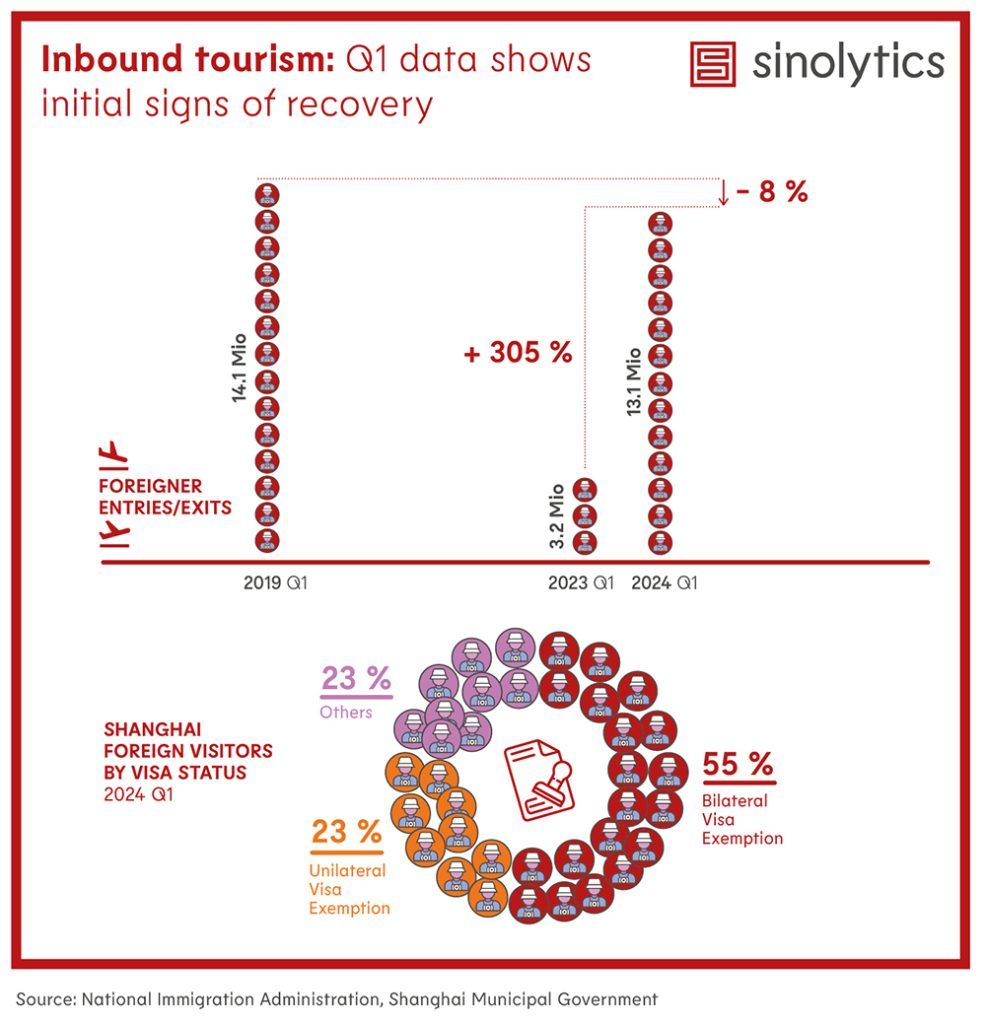
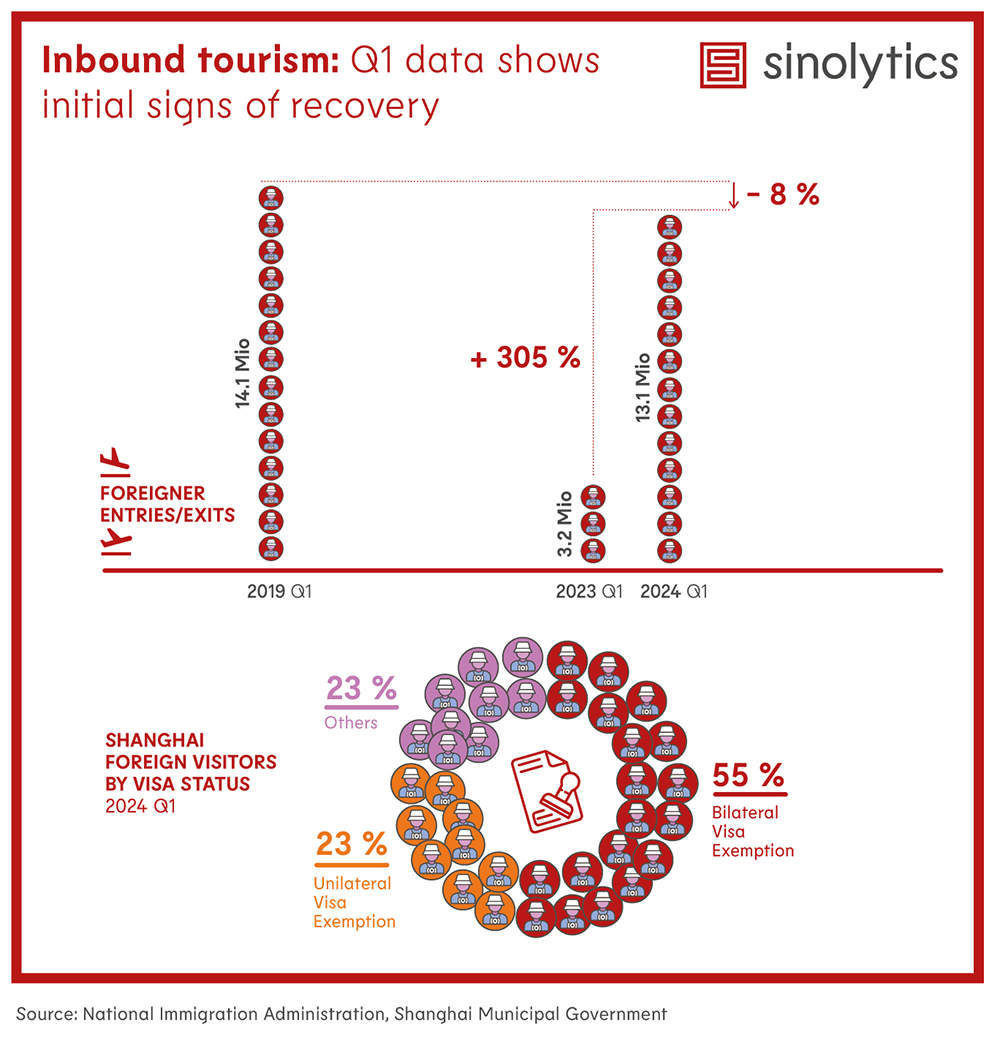
Sinolytics is a research-based business consultancy entirely focused on China. It advises European companies on their strategic orientation and specific business activities in the People’s Republic.
According to information from the Taiwan Coast Guard, a Chinese man has been arrested on suspicion of entering the country illegally after taking a speedboat into a harbor at the strategically important mouth of a river leading to Taipei. The authorities have since launched an investigation. According to the Taiwanese state news agency, the man is said to be a former officer of the Chinese Navy, a 60-year-old ex-officer of the People’s Army with the surname Ruan. This led to speculation about the background of his actions.
According to the Coast Guard, a suspicious vessel was spotted six nautical miles (eleven kilometers) off the coast of Tamsui in northern Taiwan on Sunday morning. After entering the Tamsui River, which leads to downtown Taipei, the boat collided with other vessels at a ferry terminal. A single Chinese man on the boat was arrested on suspicion of violating Taiwan’s entry and exit regulations, the Coast Guard said. Nothing was said about his motive. rtr/cyb
The Czech Republic will open a new center in Taipei this week with the aim of strengthening cultural relations. “The Czech Centre in Taiwan will launch its activity on Friday, June 14” with an exhibition of Czech photographs, the foreign ministry said. Jitka Pánek Jurková, the director general responsible for the cultural centers, told the news agency CTK that the EU member state Czech Republic “want to be seen and heard in Taipei.” The Czech Center in Taipei “is designed to deepen the understanding among the Taiwanese public of traditional and especially contemporary Czech culture,” she added.
According to CTK, the EU state currently has 28 cultural centers worldwide, but none in China. Prague is one of the EU states with the closest ties to Taiwan. Beijing considers any kind of rapprochement with Taiwan to be a provocation. ari
Four US university lecturers and a Chinese tourist have been stabbed in a busy park in Jilin in northeast China, according to Chinese and American government officials. The lecturers from Cornell College, a private college in Mount Vernon, Iowa, were in China for an exchange program with Beihua University. The college said on Monday that they were wounded “in a serious incident.”
The Chinese authorities reported that a 55-year-old man named Cui was arrested on Monday. He had collided with a foreigner in the park and then proceeded to stab the man, three other foreigners and a Chinese man who tried to stop him. The injuries were said not to be life-threatening. The motive for the attack was not specified.
Footage allegedly showing the incident surfaced on Chinese social media on Monday ,but was quickly censored. It shows two men and a woman lying on the ground, covered in blood and surrounded by onlookers. They appeared to be conscious and talking into their cell phones. According to CNN, the video was recorded in Beishan Park, a popular green space in downtown Jilin, less than half an hour’s drive from Beihua University.
China’s Foreign Ministry confirmed Tuesday that “four foreign teachers at Beihua University were attacked.” They were immediately taken to hospital and sustained no life-threatening injuries. The police called it an isolated incident that would be investigated further. The governor of the state of Iowa, Kim Reynolds, spoke of a “horrific attack.” Adam Zabner, who represents Iowa in the US House of Representatives, told CNN that his brother David was one of the victims. He had received stitches and appears to be recovering. rtr/cyb
The city of Amsterdam will no longer use cameras manufactured in China, Alexander Scholtes, the city councilor responsible for information and communication technology policy, announced. The Chinese cameras are to be withdrawn from circulation within five years over concerns about human rights and possible espionage, as reported by the NL Times.
Amsterdam currently uses 1,280 Chinese cameras for various tasks, such as surveillance and traffic control. In May 2023, the city’s Gemeenteraad adopted a motion calling on the mayor and aldermen to stop using Chinese-made cameras due to concerns that these cameras could transmit images to the manufacturer, the Chinese government or both. There were also “concerns about the possible involvement of Chinese camera manufacturers in human rights violations in China, including against Uyghurs,” Scholtes said in a letter.
According to the Association of Dutch Municipalities (VNG), many local authorities struggle with the problem of Chinese cameras, Scholtes explained. The VNG will pass on the details of the Amsterdam contract conditions and award criteria for the purchase of cameras to all municipalities. cyb
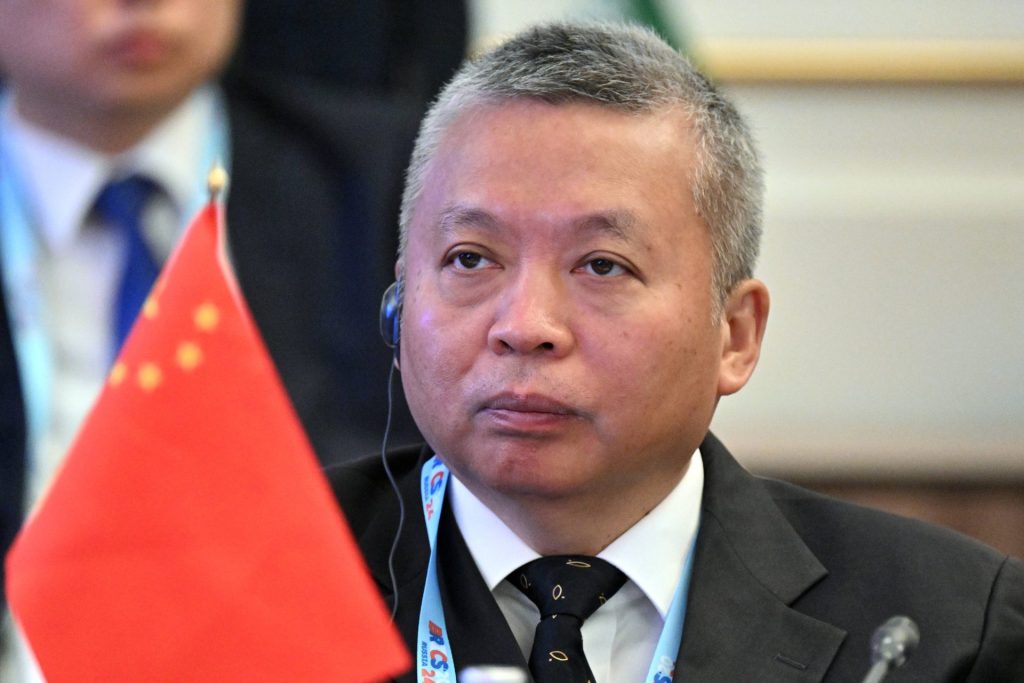
Zhang Kejian, the director of the China National Space Administration (CNSA), once again had a reason to celebrate last Tuesday. As planned, just two days after landing on the moon, the ascent module of the “Chang’e-6” probe lifted off from the moon and made its way back to Earth. It carries a very special cargo on board. China is the first country to collect rock samples from the far side of the moon.
Zhang’s agency announced on Tuesday that the devices on board, including those from the European Space Agency (ESA) and France, also performed their tasks as expected. Finally, the probe unfurled a Chinese flag. Zhang is already used to such success stories. Since May 2018, the 62-year-old has managed the Chinese space agency well.
Zhang Kejian, who was already included in Time Magazine’s list of the 100 most influential people of 2019, studied materials science and engineering at Tsinghua University, one of China’s most prestigious universities. His career has focused entirely on the aerospace industry, particularly at the China Aerospace Science and Industry Corporation (CASIC), where he has held various executive positions.
Under Zhang’s leadership, the space agency has not only successfully completed many missions, but has also placed a strong focus on expanding international cooperation, making space travel an instrument of Chinese politics.
The Chang’e-6 mission is another example of this. Not only were Europeans involved, but for the first time, China also enabled Pakistan to participate in a lunar mission. The ICUBE-Q satellite, part of the mission, was jointly developed by Pakistan’s Institute of Space Technology and China’s Shanghai Jiao Tong University. The satellite performed exploration activities such as taking pictures of the moon.
Meanwhile, China built a large satellite assembly and testing center in Egypt under Zhang, which opened in Cairo in June 2023. Egypt joined the International Lunar Research Station (ILRS) project. This project involves joint research and development in lunar and deep space exploration. South Africa is also an important partner in the ILRS project. It works closely with China. Together, they carry out space missions and develop research projects. Under Zhang’s guidance, a BRICS space cooperation was also established, which pools the capabilities of the BRICS countries (Brazil, Russia, India, China, South Africa) and uses joint earth observation data.
These examples show how Zhang has expanded international cooperation to strengthen China’s position as a leading space nation and promote global partnerships. Zhang’s long tenure at the helm of the space agency shows that Beijing is satisfied with his work. He has already held his post for more than six years. His predecessors had much shorter terms:
As Zhang Kejian approaches the retirement age of 62, he will probably want to achieve a few more milestones before leaving the agency.
China is planning to send astronauts to the moon by 2030 at the latest. This mission would make China the only nation besides the USA to have successfully carried out a manned moon landing. In the long term, China also aims to establish a permanent moon base. It will serve as a scientific research platform and a springboard for future deep space missions. Zhang will at least want to lay the foundations for this. Joern Petring
Nynke Rozema has been Business Development Coordinator China at the Netherlands Enterprise Agency (Rijksdienst voor Ondernemend Nederland, RVO), an executive body of the Ministry of Economic Affairs and Climate Policy, since June. Rozema is based in Amsterdam.
Raymond Cui has been Deputy Head of China at Uhde Inventa-Fischer, an independent company within the Thyssenkrupp Group, since April. He was previously Vice President at the Leoking Group, a listed company in Shenzhen with around 2,000 employees.
Is something changing in your organization? Let us know at heads@table.media!

Wheat harvest in Suqian, Jiangsu province: 2024 is set to be a good year for Chinese wheat farming. Analysts predict significantly better harvests for farmers than in the previous year, as Chinese meteorologists have predicted good conditions for the winter-growing regions of Jianghui and Jiangnan. Due to repeated snowfall in January and February, the soil is sufficiently moist for the wheat plants to survive the winter largely unscathed. The cancellation of a total of 500,000 tons of wheat imports from the USA in March was a sign that the Chinese authorities are expecting a good harvest.
Will the EU Commission announce its decision on tariffs on Chinese EVs today? Excitement has been building for weeks now. The impending decision is also fuelling the debate in Germany about its justification and possible side effects.
The scientific community has now come out in support of the proponents of tariffs. “Germany and the EU are not putting themselves in the wrong with trade defense instruments,” wrote the German Economic Institute in a study on the competitive situation with China. It argues that the People’s Republic has begun interfering in the economy through its subsidies. We show how market-oriented economists are becoming advocates of trade measures.
Today, we also introduce Tiangong, the star of this year’s Zhongguancun Forum, where China presents tech innovations. Tiangong was developed by the Beijing Humanoid Robot Innovation Centre and is part of the domestic Chinese race to develop human-like robots, Joern Petring explains in his analysis.
The government in Beijing sees these robots as the next big innovation in which Chinese companies are supposed to become global market leaders. So far, the United States and Japan still have a head start in some areas. But where does that leave Germany?


The upcoming EU decision regarding tariffs on electric cars manufactured in China has once again fuelled the debate about their justification and possible side effects. It is about the tension between open markets, the protection of domestic industry and a swift mobility transition. Business and politicians largely agree that competitive pressure from China has recently increased significantly. However, opinions differ on whether tariffs do not already constitute unacceptable protectionism.

While EU Trade Commissioner Valdis Dombrovskis defends higher tariffs in an interview with Table.Briefings as a necessary safeguard against unfair competition, key German players have recently once again spoken out against trade interventions. The Foundation for Family Businesses and Politics justified its rejection last Friday with the risk of a trade conflict, which would affect all companies in international business. German Transport Minister Volker Wissing of the Free Democratic Party (FDP) rejects the interventions with similar arguments, as does the German car manufacturers’ association VDA.
The scientific community has now come out in support of tariffs. “Germany and the EU are not doing anything wrong by using trade defense instruments,” economist Juergen Matthes from the Cologne Institute for Economic Research (IW) writes in a new study on the competitive situation with China. He argues that China has started to interfere in the free economy through its subsidies. By imposing tariffs, Europe would only try to “compensate for China’s distortion of competition by leveling the playing field.”

Matthes sees good arguments for the compensatory effect of the tariffs in the results of a new survey of 900 German companies as part of the IW Future Panel. Half the respondents stated that Chinese competitors undercut their prices by at least 20 percent. Even companies that carry out intensive research themselves are facing ruinous price pressure. The consequences are the threat of layoffs and relocations.
Overall, the survey reveals a growing unease about the increasing risk from China. “In summary, the survey results show that competition from China, which is often perceived as subsidized, is another serious stress factor for the German business model,” Matthes said. Many companies also fear that a future conflict over Taiwan could escalate into a major conflict that would significantly disrupt economic relations.
The current high competitive pressure is the result of several overlapping developments: Huge overcapacities have emerged in China – spontaneously but also due to government support for the manufacturing industry. This also affects high-quality goods. As China’s consumption and investments slow down, companies are unable to sell their products on the domestic market. The oversupply depresses prices. Almost everything is significantly cheaper in China than in Europe at the moment: energy, raw materials, primary products, and personnel.
As a result, other markets have increasingly sealed themselves off from the flood of goods, especially the US. Turkey, for example, has recently increased its tariffs on Chinese cars. “The EU market is therefore currently the largest market open to Chinese manufacturers,” Dombrovskis said. “And we can see that the market share of Chinese manufacturers is growing very quickly.” The EU Commission must react to the threats to European industry.

The import pressure from China is rising sharply, particularly in environmental technology such as solar cells and batteries: After the US government increased tariffs, Chinese exports have shifted to Europe. This increases competition for companies such as ACC, Northvolt and VW, which want to manufacture their own batteries in Europe. The overcapacity is so massive that Chinese companies are already calling for government intervention at home to counter the destructive price war.
Unlike the Foundation for Family Businesses or the VDA, economist Matthes considers the risk of Chinese countermeasures calculable. Only three percent of German jobs directly or indirectly depend on exports to China; most German suppliers produce locally for the Chinese market anyway. Matthes believes the current priority is to protect the European industrial base from being undermined by China’s subsidized exports.
In addition, the EU must show that it is willing to act and occasionally take a warning shot at China for its threatening behavior, said Matthes. He argues that it is important that the EU’s policy remains within the framework of what the World Trade Organization (WTO) stipulates. Otherwise, the EU would truly be in the wrong.
However, the IW also emphasizes that the EU must not leave it at tariffs and other protective instruments, otherwise it will only emerge poorer. It needs a “fundamental and broad-based reform initiative” for improved competitiveness. Overall, the investment and location conditions must be massively improved again.
Above all, it comes down to innovation and digitalization. Germany’s problem lies almost exclusively in the fact that China’s technical capabilities have risen to a world-class level, and it now offers state-of-the-art quality products at low prices.
Forty years ago, goods such as plastic flowers and T-shirts came from China, 30 years ago, sneakers and electronic toys, 20 years ago, electronics such as PCs and cell phones – and now what Germany is known for: machinery, cutting-edge electronics, vehicles, optical devices, medical technology, specialized chemicals and the like.
Industries such as precision mechanics are only now really pushing onto the international markets from the People’s Republic. China is also playing much harder today, as it hardly needs German technical assistance anymore. These are all successes of Chinese industrial policy and, in particular, the “Made in China 2025” initiative.

The annual Zhongguancun Forum is known as the place where Chinese companies present new technological breakthroughs and innovations to the world. This year, the forum, named after Beijing’s eponymous tech district, had a very special star in the form of “Tiangong.” In late April, guests watched in awe as the humanoid robot walked across the stage with relatively stable steps.
The company Beijing Humanoid Robot Innovation Center has developed Tiangong. It claims that the robot moves at six kilometers per hour. With a height of 1.63 meters and a weight of just 43 kilograms, it has a “slim and efficient design.” Its visual perception sensors allow it to “precisely recognize and navigate its surroundings.”
The next spectacular video from China followed a few days ago. In it, the company Unitree Robotics showed off its G1. The robot, which will be priced at 16,000 dollars in the future, demonstrated remarkable abilities that seem both fascinating and slightly scary. The G1 was shown staying on its feet after being hit and knocked and constantly realigning itself, making it appear robust and resilient. Finally, it folds its legs and hands so compactly that it can simply be carried away.
These presentations clearly show that the race to introduce humanoid robots is clearly picking up speed. Chinese companies want to play a leading role in this market. But the competition in the West is formidable. Just two weeks before the Chinese unveiled Tiangong, US robot manufacturer Boston Dynamics, which is now part of the Japanese Hyundai Group, made headlines with the presentation of an all-electric version of its famous Atlas robot.
Its predecessor, a hydraulic version, was a YouTube star. For years, Boston Dynamics published videos showing it overcoming difficult obstacle courses or dancing. Other Western companies also have ambitious plans. Tesla plans to deploy its Optimus robot in its own factories by the end of 2024 and make it available for sale to external customers by the end of 2025.
Just last November, China’s Ministry of Industry and Information Technology issued new guidelines for developing humanoid robots. The government sees these robots as the next big innovations in which Chinese companies should become global market leaders. The paper lists targets and timetables for this new sector.
Accordingly, a domestic ecosystem for humanoid robots is to be established, and mass production will be prepared as early as next year. A particular focus is on developing dexterous robot hands, arms, and feet and research into artificial intelligence (AI) for humanoid robots. The aim is to achieve breakthroughs in motion control and human-machine interaction.
By 2027, the ministry aims to develop humanoid robots that are able to think, learn, and innovate. In parallel, a reliable industrial supply chain system is to be established to support production. The ministry expects humanoid robots to be among the next “breakthrough products,” similar to computers, smartphones and electric vehicles.
The plan is to establish two to three leading global robot manufacturers, as well as a cluster of small and medium-sized companies for specialized robot applications. Lightweight frames, strong body structures and high-precision sensors are important. The guidelines also cover possible application areas for the robots, including automotive production, healthcare, services, agriculture, logistics and special industrial environments where humans perform dangerous tasks.
According to a report by Grand View Research, the global market for humanoid robots was worth 1.11 billion dollars in 2022. It is expected to achieve an average annual growth rate of 21.1 percent between 2023 and 2030.
However, Chinese experts know that Chinese companies have a difficult task ahead of them. The Chinese party newspaper Global Times recently commented that improvements are still needed, particularly in chips and software, in order to catch up with the USA.
At the same time, it referred to humanoid robots as part of the “high-quality productive forces.” The term coined by state and party leader Xi Jinping has recently become a buzzword. The idea is to promote China’s economic development through technological innovation. The government wants to modernize the country’s industrial base. This should not only be achieved through the production of green energy and electric cars, but also through the sale of humanoid robots.


Sinolytics is a research-based business consultancy entirely focused on China. It advises European companies on their strategic orientation and specific business activities in the People’s Republic.
According to information from the Taiwan Coast Guard, a Chinese man has been arrested on suspicion of entering the country illegally after taking a speedboat into a harbor at the strategically important mouth of a river leading to Taipei. The authorities have since launched an investigation. According to the Taiwanese state news agency, the man is said to be a former officer of the Chinese Navy, a 60-year-old ex-officer of the People’s Army with the surname Ruan. This led to speculation about the background of his actions.
According to the Coast Guard, a suspicious vessel was spotted six nautical miles (eleven kilometers) off the coast of Tamsui in northern Taiwan on Sunday morning. After entering the Tamsui River, which leads to downtown Taipei, the boat collided with other vessels at a ferry terminal. A single Chinese man on the boat was arrested on suspicion of violating Taiwan’s entry and exit regulations, the Coast Guard said. Nothing was said about his motive. rtr/cyb
The Czech Republic will open a new center in Taipei this week with the aim of strengthening cultural relations. “The Czech Centre in Taiwan will launch its activity on Friday, June 14” with an exhibition of Czech photographs, the foreign ministry said. Jitka Pánek Jurková, the director general responsible for the cultural centers, told the news agency CTK that the EU member state Czech Republic “want to be seen and heard in Taipei.” The Czech Center in Taipei “is designed to deepen the understanding among the Taiwanese public of traditional and especially contemporary Czech culture,” she added.
According to CTK, the EU state currently has 28 cultural centers worldwide, but none in China. Prague is one of the EU states with the closest ties to Taiwan. Beijing considers any kind of rapprochement with Taiwan to be a provocation. ari
Four US university lecturers and a Chinese tourist have been stabbed in a busy park in Jilin in northeast China, according to Chinese and American government officials. The lecturers from Cornell College, a private college in Mount Vernon, Iowa, were in China for an exchange program with Beihua University. The college said on Monday that they were wounded “in a serious incident.”
The Chinese authorities reported that a 55-year-old man named Cui was arrested on Monday. He had collided with a foreigner in the park and then proceeded to stab the man, three other foreigners and a Chinese man who tried to stop him. The injuries were said not to be life-threatening. The motive for the attack was not specified.
Footage allegedly showing the incident surfaced on Chinese social media on Monday ,but was quickly censored. It shows two men and a woman lying on the ground, covered in blood and surrounded by onlookers. They appeared to be conscious and talking into their cell phones. According to CNN, the video was recorded in Beishan Park, a popular green space in downtown Jilin, less than half an hour’s drive from Beihua University.
China’s Foreign Ministry confirmed Tuesday that “four foreign teachers at Beihua University were attacked.” They were immediately taken to hospital and sustained no life-threatening injuries. The police called it an isolated incident that would be investigated further. The governor of the state of Iowa, Kim Reynolds, spoke of a “horrific attack.” Adam Zabner, who represents Iowa in the US House of Representatives, told CNN that his brother David was one of the victims. He had received stitches and appears to be recovering. rtr/cyb
The city of Amsterdam will no longer use cameras manufactured in China, Alexander Scholtes, the city councilor responsible for information and communication technology policy, announced. The Chinese cameras are to be withdrawn from circulation within five years over concerns about human rights and possible espionage, as reported by the NL Times.
Amsterdam currently uses 1,280 Chinese cameras for various tasks, such as surveillance and traffic control. In May 2023, the city’s Gemeenteraad adopted a motion calling on the mayor and aldermen to stop using Chinese-made cameras due to concerns that these cameras could transmit images to the manufacturer, the Chinese government or both. There were also “concerns about the possible involvement of Chinese camera manufacturers in human rights violations in China, including against Uyghurs,” Scholtes said in a letter.
According to the Association of Dutch Municipalities (VNG), many local authorities struggle with the problem of Chinese cameras, Scholtes explained. The VNG will pass on the details of the Amsterdam contract conditions and award criteria for the purchase of cameras to all municipalities. cyb

Zhang Kejian, the director of the China National Space Administration (CNSA), once again had a reason to celebrate last Tuesday. As planned, just two days after landing on the moon, the ascent module of the “Chang’e-6” probe lifted off from the moon and made its way back to Earth. It carries a very special cargo on board. China is the first country to collect rock samples from the far side of the moon.
Zhang’s agency announced on Tuesday that the devices on board, including those from the European Space Agency (ESA) and France, also performed their tasks as expected. Finally, the probe unfurled a Chinese flag. Zhang is already used to such success stories. Since May 2018, the 62-year-old has managed the Chinese space agency well.
Zhang Kejian, who was already included in Time Magazine’s list of the 100 most influential people of 2019, studied materials science and engineering at Tsinghua University, one of China’s most prestigious universities. His career has focused entirely on the aerospace industry, particularly at the China Aerospace Science and Industry Corporation (CASIC), where he has held various executive positions.
Under Zhang’s leadership, the space agency has not only successfully completed many missions, but has also placed a strong focus on expanding international cooperation, making space travel an instrument of Chinese politics.
The Chang’e-6 mission is another example of this. Not only were Europeans involved, but for the first time, China also enabled Pakistan to participate in a lunar mission. The ICUBE-Q satellite, part of the mission, was jointly developed by Pakistan’s Institute of Space Technology and China’s Shanghai Jiao Tong University. The satellite performed exploration activities such as taking pictures of the moon.
Meanwhile, China built a large satellite assembly and testing center in Egypt under Zhang, which opened in Cairo in June 2023. Egypt joined the International Lunar Research Station (ILRS) project. This project involves joint research and development in lunar and deep space exploration. South Africa is also an important partner in the ILRS project. It works closely with China. Together, they carry out space missions and develop research projects. Under Zhang’s guidance, a BRICS space cooperation was also established, which pools the capabilities of the BRICS countries (Brazil, Russia, India, China, South Africa) and uses joint earth observation data.
These examples show how Zhang has expanded international cooperation to strengthen China’s position as a leading space nation and promote global partnerships. Zhang’s long tenure at the helm of the space agency shows that Beijing is satisfied with his work. He has already held his post for more than six years. His predecessors had much shorter terms:
As Zhang Kejian approaches the retirement age of 62, he will probably want to achieve a few more milestones before leaving the agency.
China is planning to send astronauts to the moon by 2030 at the latest. This mission would make China the only nation besides the USA to have successfully carried out a manned moon landing. In the long term, China also aims to establish a permanent moon base. It will serve as a scientific research platform and a springboard for future deep space missions. Zhang will at least want to lay the foundations for this. Joern Petring
Nynke Rozema has been Business Development Coordinator China at the Netherlands Enterprise Agency (Rijksdienst voor Ondernemend Nederland, RVO), an executive body of the Ministry of Economic Affairs and Climate Policy, since June. Rozema is based in Amsterdam.
Raymond Cui has been Deputy Head of China at Uhde Inventa-Fischer, an independent company within the Thyssenkrupp Group, since April. He was previously Vice President at the Leoking Group, a listed company in Shenzhen with around 2,000 employees.
Is something changing in your organization? Let us know at heads@table.media!

Wheat harvest in Suqian, Jiangsu province: 2024 is set to be a good year for Chinese wheat farming. Analysts predict significantly better harvests for farmers than in the previous year, as Chinese meteorologists have predicted good conditions for the winter-growing regions of Jianghui and Jiangnan. Due to repeated snowfall in January and February, the soil is sufficiently moist for the wheat plants to survive the winter largely unscathed. The cancellation of a total of 500,000 tons of wheat imports from the USA in March was a sign that the Chinese authorities are expecting a good harvest.
